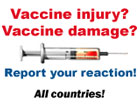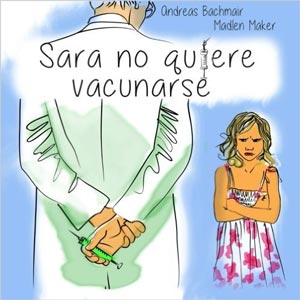Diphtheria
General informatio n
n
Diphtheria is a typical infectious disease which generally only occurs in people who have become weak, during wars and hard times. In Germany there was a steep rise in diphtheria cases during and after both world wars, mainly due to bad living conditions and large numbers of refugees. In 1925 there were 40000 cases of diphtheria and in 1941 there were 200000 cases. The mortality rate was between 5 and 7%. (Sitzmann F.C. u.and.: Impfungen -Aktuelle Empfehlungen. Hans Marseille, München 1998: 43)
Dr. Buchwald mentions that after the introduction of diphtheria vaccination in 1925 in Germany the number of cases rose by 600% up to the beginning of the Second World War. After the war there were no more vaccinations and the numbers went down drastically. This development was interrupted right after the mass vaccination campaign between 1979 and 1978. (Buchwald: Impfen, das Geschäft mit der Angst). In Switzerland the number of cases of diphtheria had already gone down before the vaccination. Therefore the imminent danger of diphtheria being brought in from the East propagated by the media should be taken with a grain of salt.
The drop in the number of diphtheria cases can therefore not be ascribed to the introduction of vaccinations. One can compare the Netherlands and Switzerland. In both countries the numbers of cases had peaked in 1944. But even though there were mass vaccinations in the Netherlands in 1939 and there were no vaccinations in Sweden the drop was the same in both countries. (Hoogendorn, over the difterie in Nederland, Bnd 1, 1948; Ericcson, Bull de IOIHP, Juli/Sept 1946, S. 616-618) The same holds true for Switzerland if one compares cantons with and without mandatory vaccinations.
According to a trial that was commissioned by the Federal Ministry of Health, 78.6% of the adult population in the West has no protection or insufficient protection against diphtheria (http://www.bmgs.bund.de/deu/gra/themen/forschung/2305_2590.php?navpos=rechts). Diphtheria thus does not occur due to a supposedly high vaccination protection but due to the social and hygienic conditions in Germany. A second comparison: If one compares the DTP vaccination rates of Germany, Lithuania and India for the year 2000, 97% had been vaccinated in Germany, 98% in Lithuania and 94% in India 94%. (These high vaccination rates only hold true for children and adolescents). Yet in Germany no case of diphtheria was reported, whereas 264 cases were reported in Lithuania and 3093 in India (www.who.int)
Epidemics are not to be expected with Germany’s present living standard. Today diphtheria occurs almost exclusively in countries that have a low standard of living and poor health care. After the fall of the Soviet Union the public health care system collapsed and there was a diphtheria epidemic. Despite lively international travels there was no rise in the number of diphtheria cases in neighboring countries (Martin Hirte: Impfen: pro und Contra S. 115)
For more information please refer to:












